"You take your suit off, go out and you're anonymous and you have your life back. But you are filled with this joy. You get to make people happy every day."
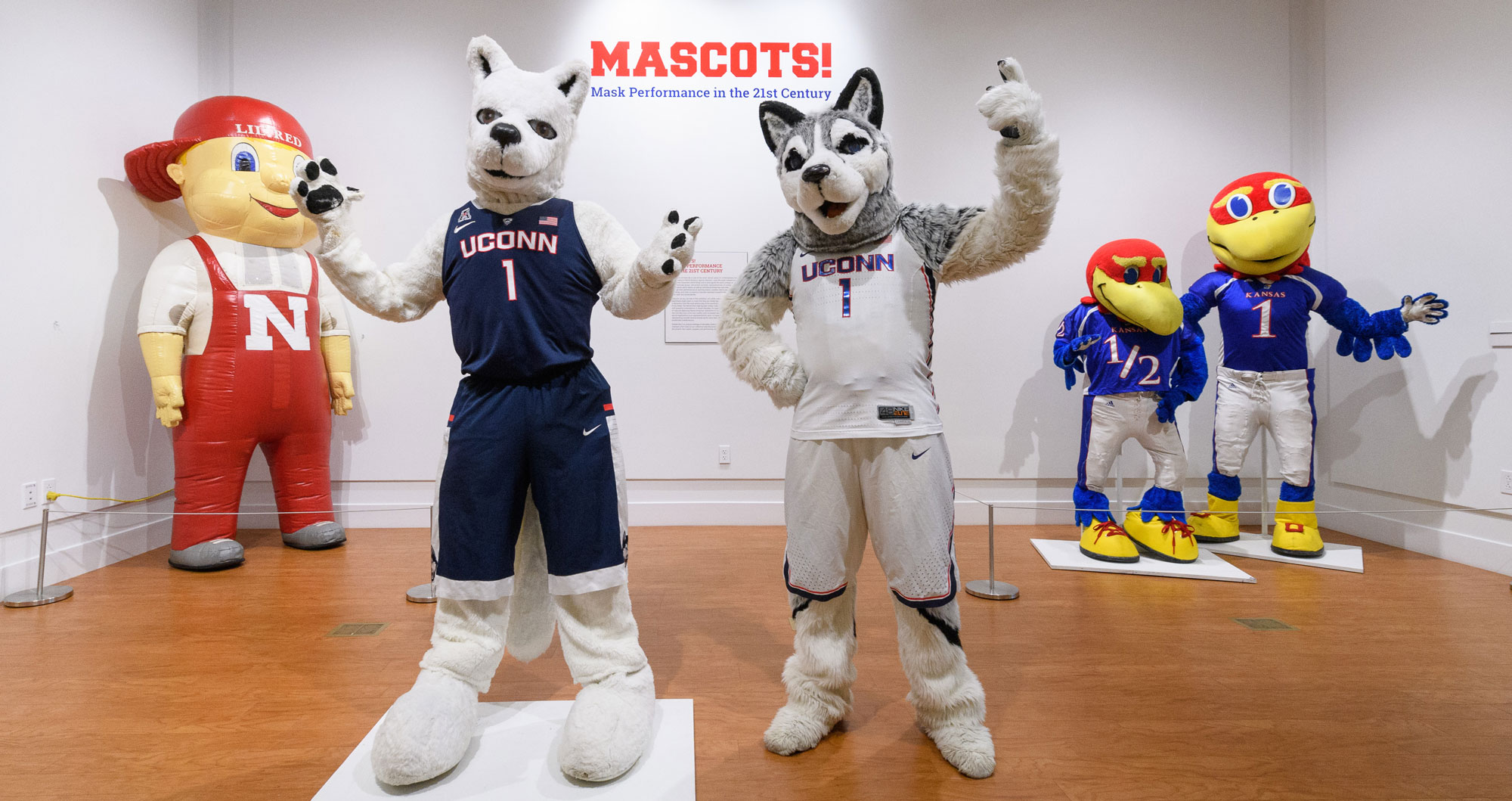
"You take your suit off, go out and you're anonymous and you have your life back. But you are filled with this joy. You get to make people happy every day."
Unmasked
John Bell was uniquely suited to develop the exhibition "Mascots! Mask Performance in the 21st Century," which was presented from October 2017 through early February 2018 at UConn's Ballard Institute and Museum of Puppetry. It was the first such museum exhibition dedicated to mascots.
Bell is a puppeteer, scholar of puppet history, author and director of the Ballard Institute who also wrote the book "Puppets, Masks, and Performing Objects" (2001, MIT Press). He is very familiar with UConn's longtime mascot, Jonathan the Husky, who has a ubiquitous presence during campus events and activities, especially cheering on the crowd for games at Harry A. Gampel Pavilion, Joseph J. Morrone Stadium, Pratt & Whitney Stadium at Rentschler Field, and other venues where the Huskies play during NCAA competition.
"When I look at sports mascot performance, I'm reminded of the performing I did with Bread and Puppet Theater, which involved pretty much the same techniques; a sculpted oversized mask and then a costume of a human or an animal," says Bell. "I know from my travels that this kind of performance is pretty common around the world in Europe, Africa, the Americas, and Asia. It's part of the larger field of performing objects."
The exhibition included 13 historic and contemporary mascots ranging from the collegiate level to professional sports teams and commercial businesses. Among the mascots featured were the Famous San Diego Chicken, originator of contemporary professional mascot performance; Lil' Red from the University of Nebraska-Lincoln, the first inflatable college mascot; Buster Brackets of ESPN, who appears during the sport network's NCAA college basketball tournament coverage; and the home team favorite, Jonathan.
The exhibition included 13 historic and contemporary mascots ranging from the collegiate level to professional sports teams and commercial businesses.
Bell says the use of over-sized masked characters has been part of traditional Asian, African, Native American, and European seasonal community rituals for centuries. In American popular culture, such characters are used during Halloween, Mardi Gras, Easter, and other events. The use of sports mascots took off in the 1960s, but can be seen earlier in the walk-around characters at the original Disneyland, which opened in 1955, and as part of the annual Macy's Thanksgiving Day Parade, which began in 1924.
"The walk-around mask character is basically the same type of character as a mascot, and they have been essential to Disneyland and Disney World," says Bell. "I think in some way when they were creating Disneyland they were thinking about the traditions of live performance and what we call 'object theater' going back to medieval, Renaissance, or 19th-century European performance. In the Macy's parade that started in 1920s, the department store was very aware that a lot of their employees were immigrants who had grown up experiencing carnival traditions in their home countries that routinely involve oversized masks and costume."
A section of the exhibit was devoted to the materials used to create mascots, a frequent highlight of Ballard Institute presentations to provide insight about the design and function for various forms of puppetry. The materials displayed featured fabrics, adhesives, polyurethane foam, paints and dyes, as well as descriptions of cooling and venting systems for the people inside the costumes. Two UConn Puppet Arts graduate students, Maggie Flanagan and Abby Bosley, prepared the materials section, including a table with fabric samples that visitors could touch, such as faux fur, Spandex knits, and sport mesh.
"Mascot masks are actually highly sophisticated combinations of different types of foam, wire, plastic, and they often include cooling systems," Bell says. "Mascots are also clearly part of the puppet world. It's interesting that puppet builders like Bonnie Erickson, who designed Miss Piggy for Jim Henson, also easily slips into designing the Phillie Phanatic and Youppi! [of the old Montreal Expos baseball team and now the NHL's Montreal Canadians], which is in the exhibition. A number of Muppet walk-around characters, like Big Bird, use the same techniques as mascots. I think it's all in the same family."
Another feature of the exhibit was a series of recordings providing some insight into the mascots by the performers who performed in the costumes. Visitors to the Ballard Institute could call a phone number to hear the recording as they stood before each costume.
Joseph Briody, '86 BUS, '95 MA, '96 Ph.D., associate director of involvement and leadership programs at UConn, spent his senior year as Jonathan and in his recording talked about what it was like, describing it as "a surreal experience."
"I had a lot of favorite memories of being the first to do the short-lived belly slide and sliding across the court at Madison Square Garden," Briody says. "Travelling to the Carrier Dome in Syracuse and being tormented by a sea of Orange fans; giving countless hugs, high-fives, and autographs to the young and some not-so-young Huskies fans and, of course, doing lots and lots of pushups in the end zone of the old Memorial Stadium during the fall football games in Storrs."
"I had a lot of favorite memories of being the first to do the short-lived belly slide and sliding across the court at Madison Square Garden."
Briody says he was especially pleased to share the experience of wearing the Jonathan costume with his older brother, John '82 BUS, and two of his children, Caitlin '17 CLAS, who performed in the costume several times as a fill-in, and his son Patrick '20 CLAS, currently a physiology and neurobiology major.
Ted Giannoulas, whose antics as the San Diego Chicken set the tone for professional sports mascots in 1974 when he initially promoted a local restaurant, recalls the debut of his new costume for the San Diego Padres.
"I promoted an event whereby I would hatch a gigantic Styrofoam egg to unveil this new coat of feathers," Giannoulas says. "I advertised the game like a wrestling match, with interviews to anyone with a microphone. It caught the public's imagination by storm; more than 47,000 people sold out Jack Murphy Stadium that night. The Padres even ordered an armored truck with the egg atop its roof, complete with a motorcade escort by the California Highway Patrol. Then to the soundtrack of the film '2001, Space Odyssey,' I smashed out of the egg to a loud standing ovation. Sports historians called it perhaps the greatest sports promotion event of all time."
For each exhibition at the Ballard Institute, Bell organizes a Puppet Forum for discussions with puppeteers, producers, scholars, and performers. During the Forum for the mascot exhibit, AJ Mass, who was the first Mr. Met for the New York Mets baseball team, and Dave Raymond, the first Phillie Phanatic for the Philadelphia baseball team, provided insight and stories from their life inside the mascot suit.
"With the super suit comes a special power. Everybody you come in contact with, you provide them with this special moment; even if they're dealing with the worst things that life can throw your way, your super power makes them happy."
"Mascots are interesting creatures. You kind of exist in this middle ground between these two worlds," says Mass, who wrote the book Yes, It's Hot in Here: Adventures in the Weird, Wooly World of Sports Mascots (Rodale 2014). "It's kind of supernatural in the real world of the baseball team, they're on the field, doing their thing and playing the game, but they don't see me as part of the team, just a guy in a suit. But the fans who see me go on the field—I'm not one of them either. I'm the guy in the suit who gets to go on the field. Being this other in both worlds is an interesting place to be."
Raymond says the unique experience of putting on a mascot costume is transformative.
"You are a celebrity that is beloved. People are running to you, telling you they love you," he says. "They want to take pictures with you and share it with all of their friends. With the super suit comes a special power. Everybody you come in contact with, you provide them with this special moment; even if they're dealing with the worst things that life can throw your way, your super power makes them happy; it's a memorable moment that makes them feel better. You take your suit off, go out and you're anonymous and you have your life back. But you are filled with this joy. You get to make people happy every day."
Coverage of "Mascots! Mask Performance in the 21st Century" reached around the world following the publication of an Associated Press story.
"It's exciting to connect to this world of performance that otherwise isn't seen as puppetry," Bell says. "The response to the exhibition has been really gratifying because mascots are so powerful. It's tapping into some mysterious force. People are so into their mascots, in a very deep way; and this exhibition shows how puppets can be extraordinarily powerful in the 21st century."
— Kenneth Best

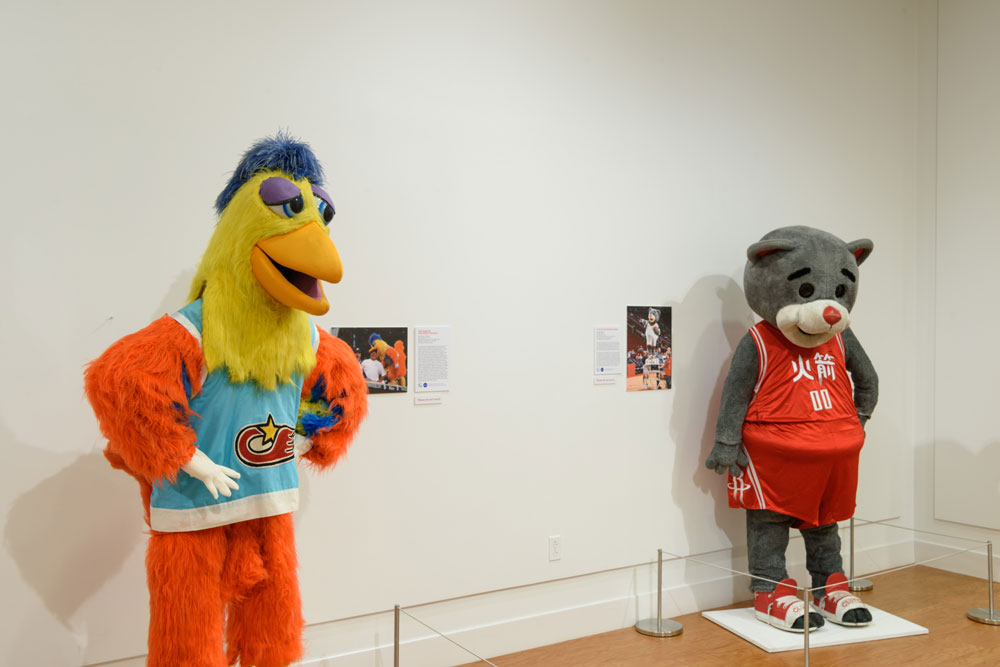
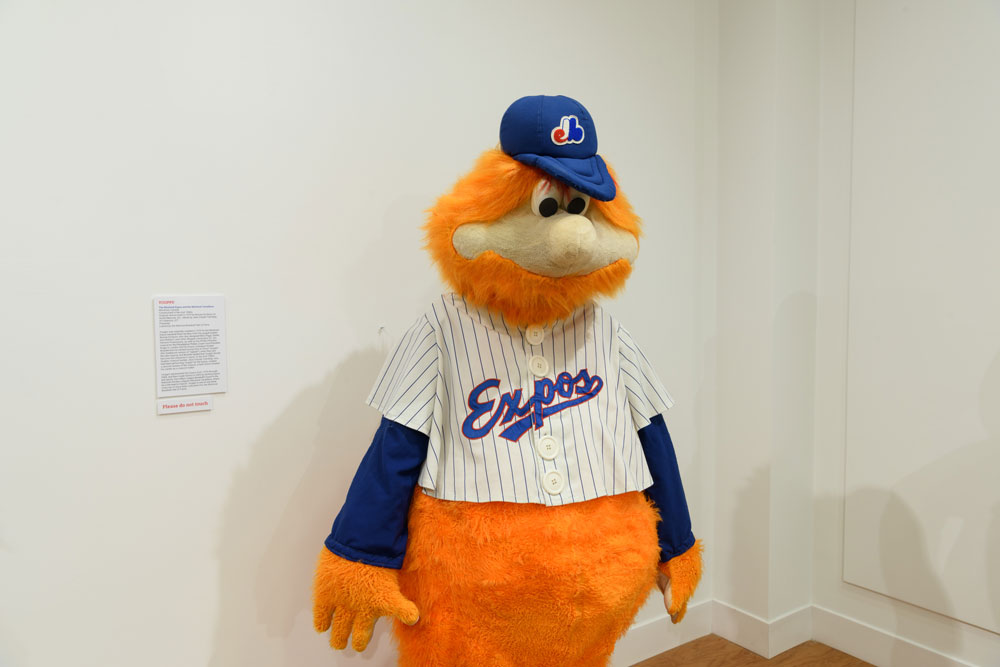
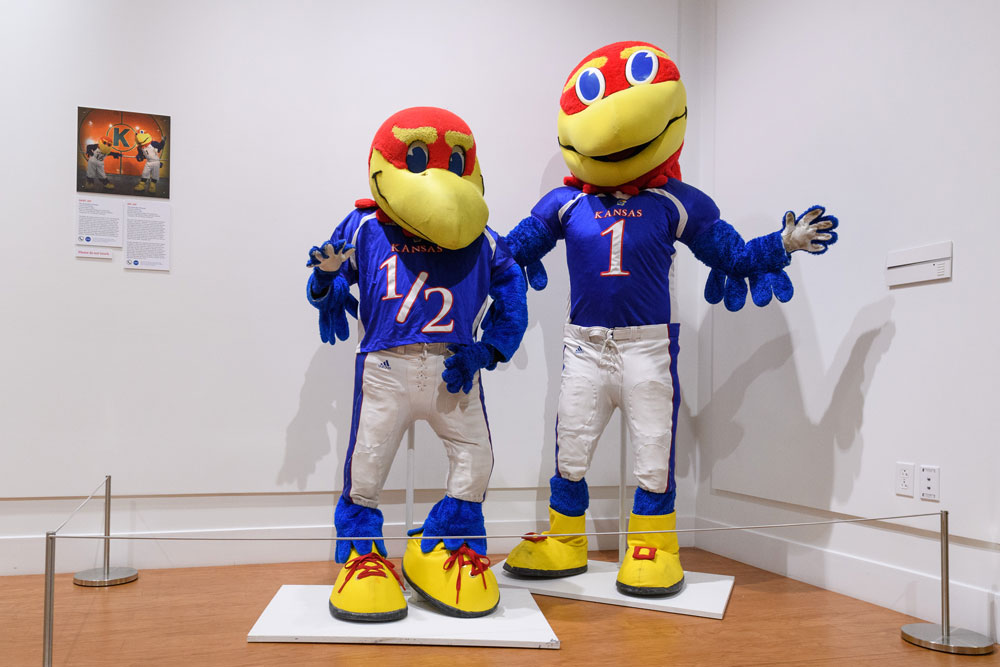
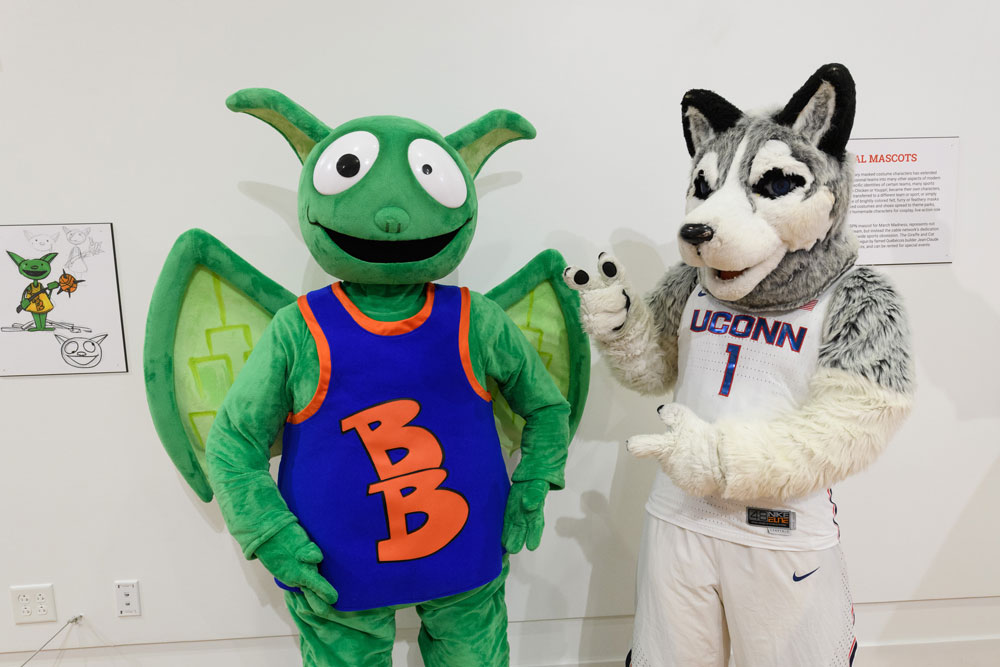
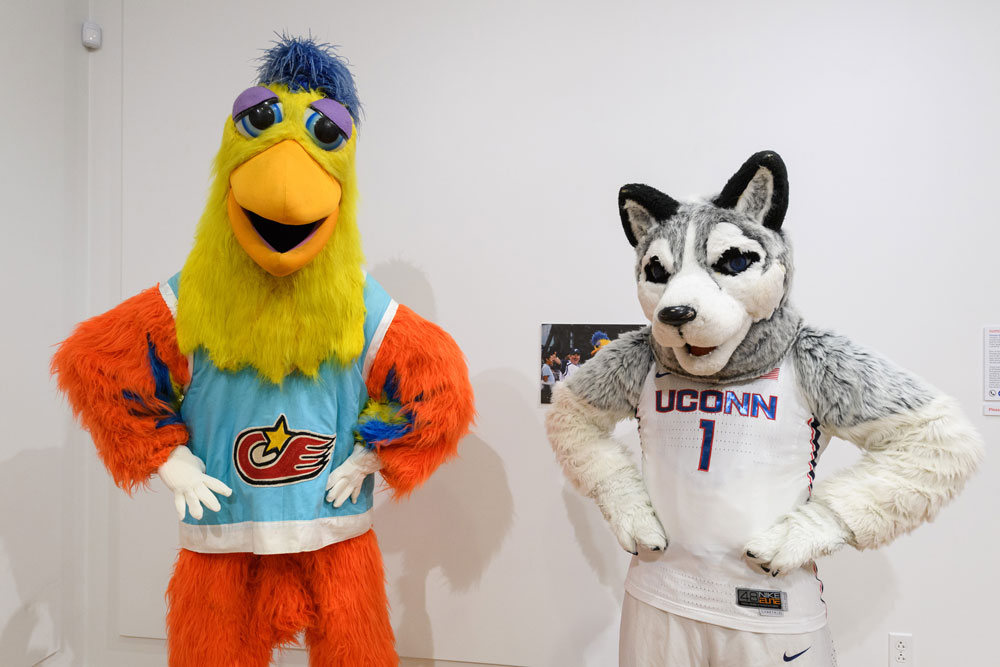
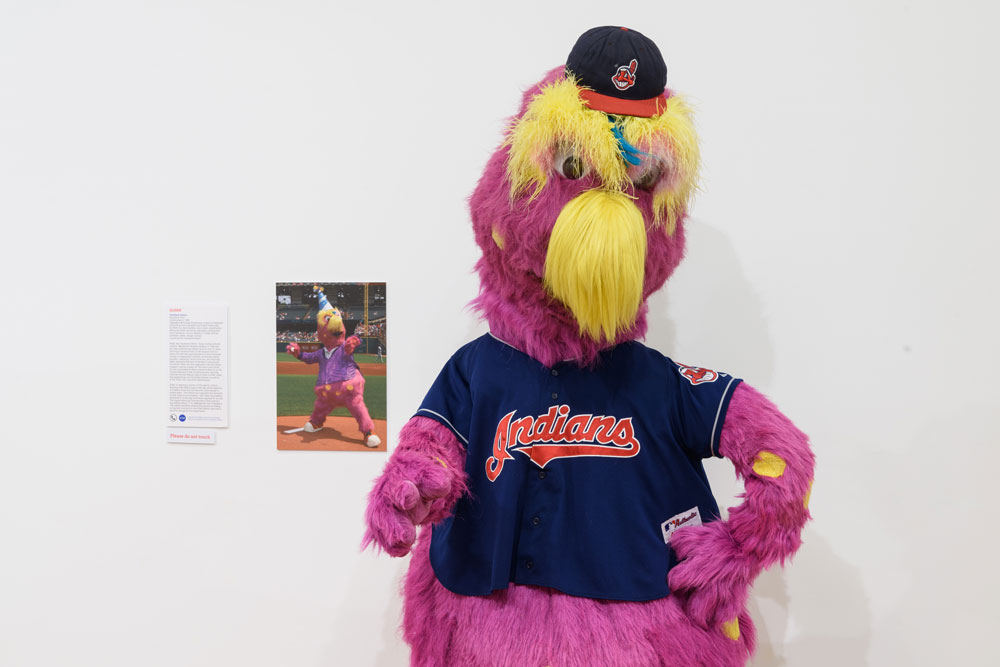
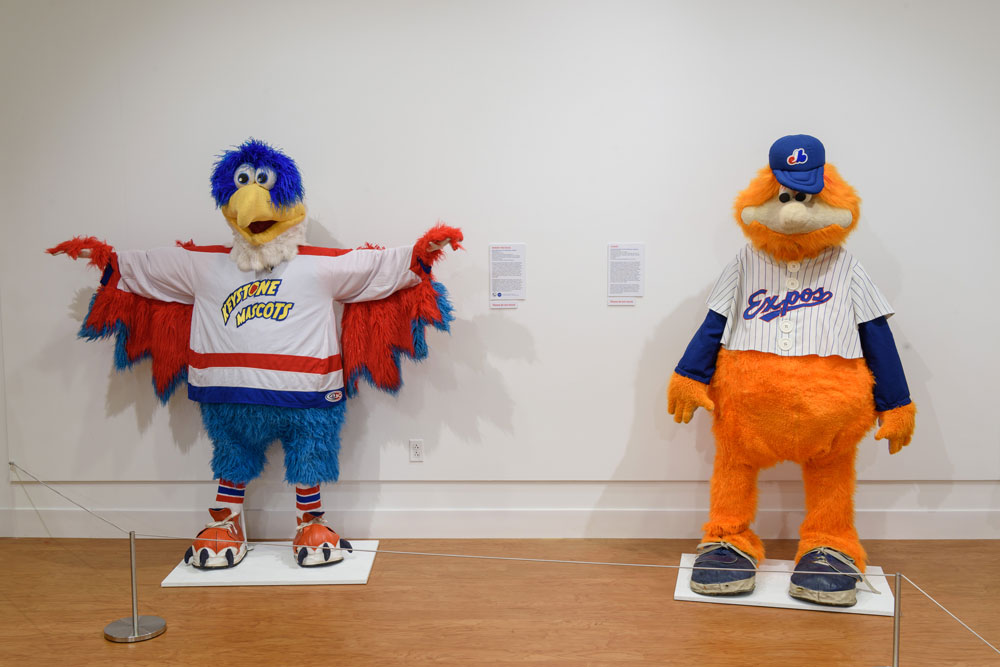
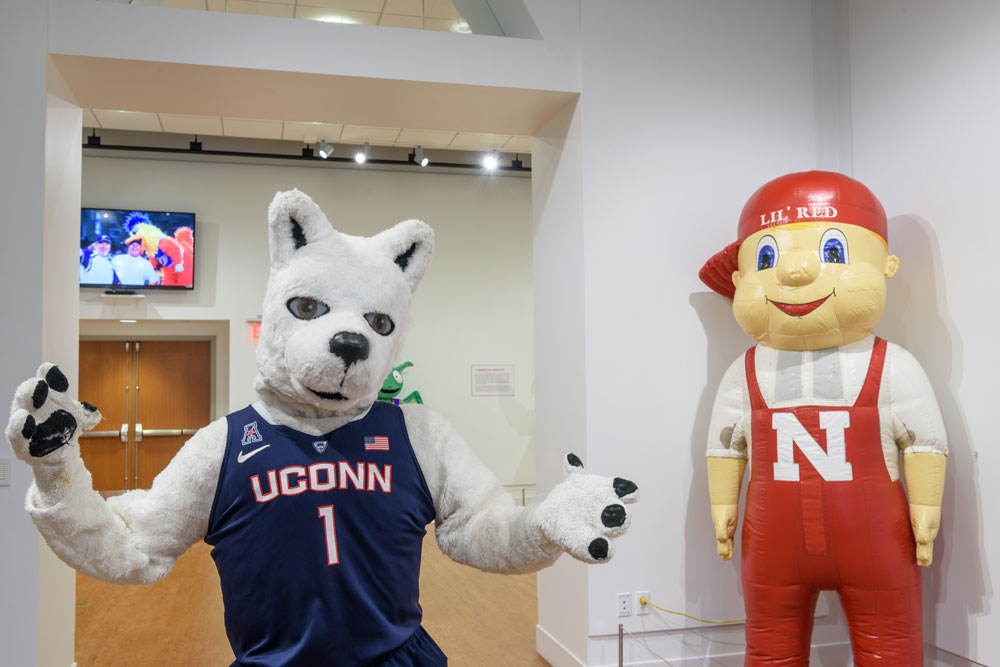
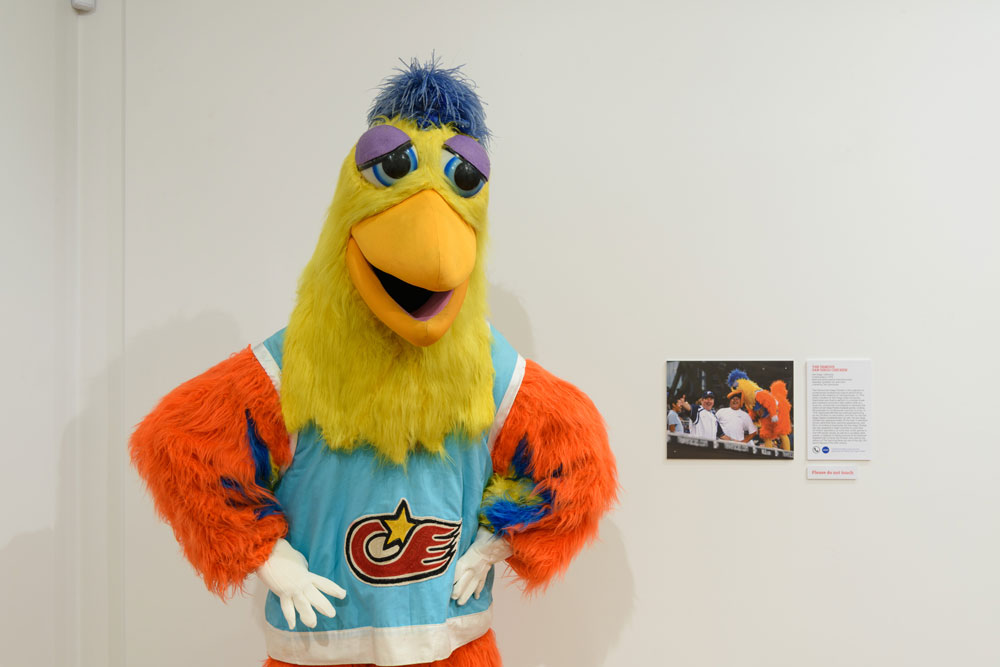
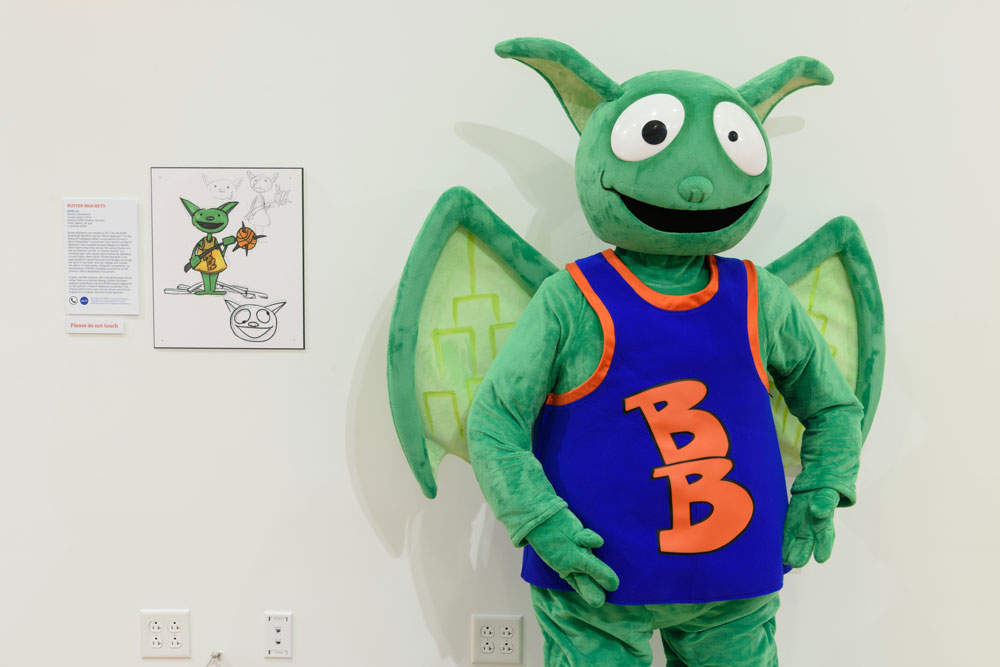
Leave a Reply